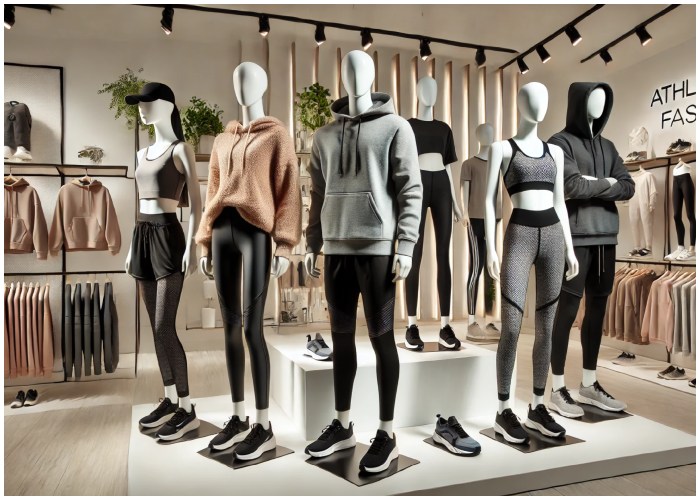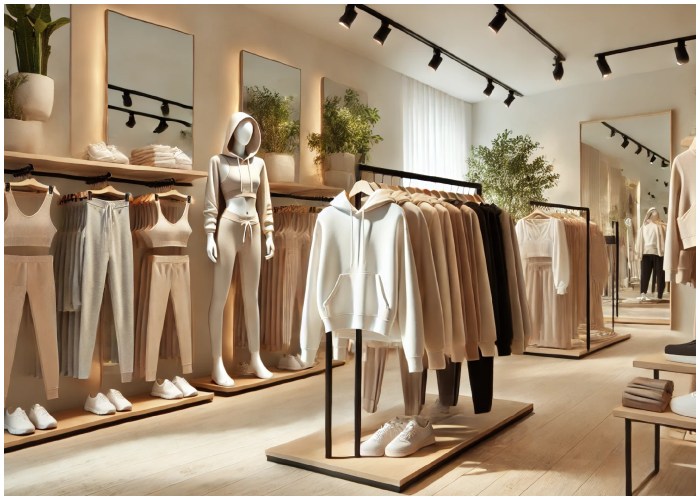For years, sportswear wasn’t considered fashionable, but today it’s impossible to ignore its influence. Whether you’re hitting the gym or running errands, you’ve likely noticed how sportswear has seamlessly integrated into everyday style. This shift gave rise to athleisure, a blend of athletic wear and leisure style that has become a go-to choice for many. The appeal lies in its comfort, functionality, and versatility—ideal for those who lead active lives and anyone who values non-restrictive clothing. But how did we reach this point where sportswear became so fashionable? Let’s explore the journey of athleisure from its origins to the modern fashion scene.

The Roots of Sportswear
Though athleisure seems like a recent trend, the roots of sportswear go back over a century. In the late 19th century, sportswear emerged as a practical category for leisure activities like tennis and golf. This early sportswear was designed purely for functionality, focusing on comfort and performance. However, it was kept separate from formal and everyday clothing, and was reserved only for specific sporting occasions.
It wasn’t until the 1920s that the lines between sportswear and fashion began to blur. Designers like Coco Chanel and Jean Patou started incorporating sportswear elements into their collections, pushing relaxed, practical silhouettes into mainstream fashion. Chanel’s focus on comfort and elegance redefined women’s fashion, while American designer Claire McCardell took things a step further by introducing utilitarian fabrics and ready-to-wear pieces. This allowed for more flexible, non-restrictive everyday clothing, setting the stage for the sportswear revolution.
The Fitness Boom and the Role of New Materials
The real game-changer for sportswear came with the fitness boom of the 1970s and 80s. Jane Fonda’s iconic workout videos, along with the rise of gym culture, pushed activewear into the spotlight. Fitness was no longer just about staying in shape; it became a lifestyle that required its own wardrobe. This led to the invention of performance-focused fabrics like Lycra and Spandex, which provided the stretch, durability, and moisture-wicking qualities that active individuals needed.
These materials revolutionized sportswear by offering clothing that wasn’t just functional but flattering and comfortable, helping to pave the way for its acceptance outside of the gym. With the combination of practicality and aesthetic appeal, activewear became increasingly popular in casual, everyday settings.
Streetwear and the Celebrity Factor
The 1990s marked a turning point for sportswear, as it started to merge with streetwear—a style that combined comfort, practicality, and fashion. Celebrities like Princess Diana played a pivotal role in bringing sportswear into public life, often photographed wearing casual sports pieces like cycling shorts and oversized sweatshirts in non-sporting settings.
Designers such as Calvin Klein and Tommy Hilfiger also capitalized on this trend by integrating sportswear-inspired elements into their streetwear collections. This fusion of styles helped erase the boundaries between athletic wear and everyday clothing, creating a new era of fashion where comfort and style could coexist.
By the 2010s, athleisure had cemented its status as a major fashion trend. Iconic pieces like sweatpants, hoodies, and leggings became part of everyday wardrobes, not just for fitness enthusiasts but for anyone looking for comfortable, versatile clothing. High-fashion labels such as Chanel, Prada, and Fendi embraced the trend, releasing luxe versions of tracksuits and branded tops that blurred the line between high fashion and streetwear.

Athleisure Today: A Fusion of Technology, Style, and Sustainability
Far from its origins in cotton sports sets and bright Spandex workout gear, today’s athleisure is a sophisticated blend of cutting-edge technology and fashion-forward design. According to research from Grand View, the athleisure market is expected to exceed $500 billion by 2025, making it one of the fastest-growing sectors in fashion.
Innovation in Fabric Technology
One key factor driving this growth is the integration of new technologies into fabric production. Modern athleisure often incorporates smart textiles that can regulate body temperature, wick away sweat, and adapt to different conditions. These innovations ensure that athleisure is not only stylish but highly functional, offering wearers maximum comfort and performance throughout the day.
Focus on Sustainability
Sustainability is another growing focus within the athleisure industry. While synthetic fibers like Lycra and Spandex have raised environmental concerns due to their role in releasing plastic microfibers into oceans, many brands are responding with eco-friendly alternatives. Companies are increasingly using recycled materials or natural fibers like organic cotton, hemp, and even wood pulp to create stylish yet sustainable clothing. This shift reflects the evolving priorities of consumers who want fashion that aligns with their environmental values.